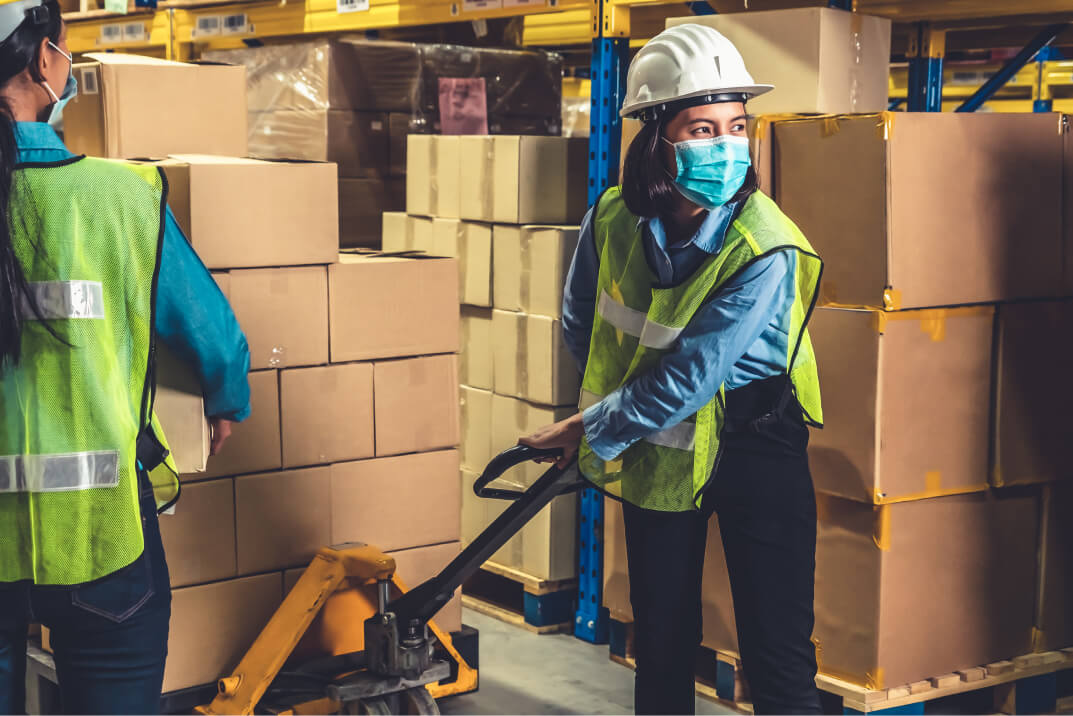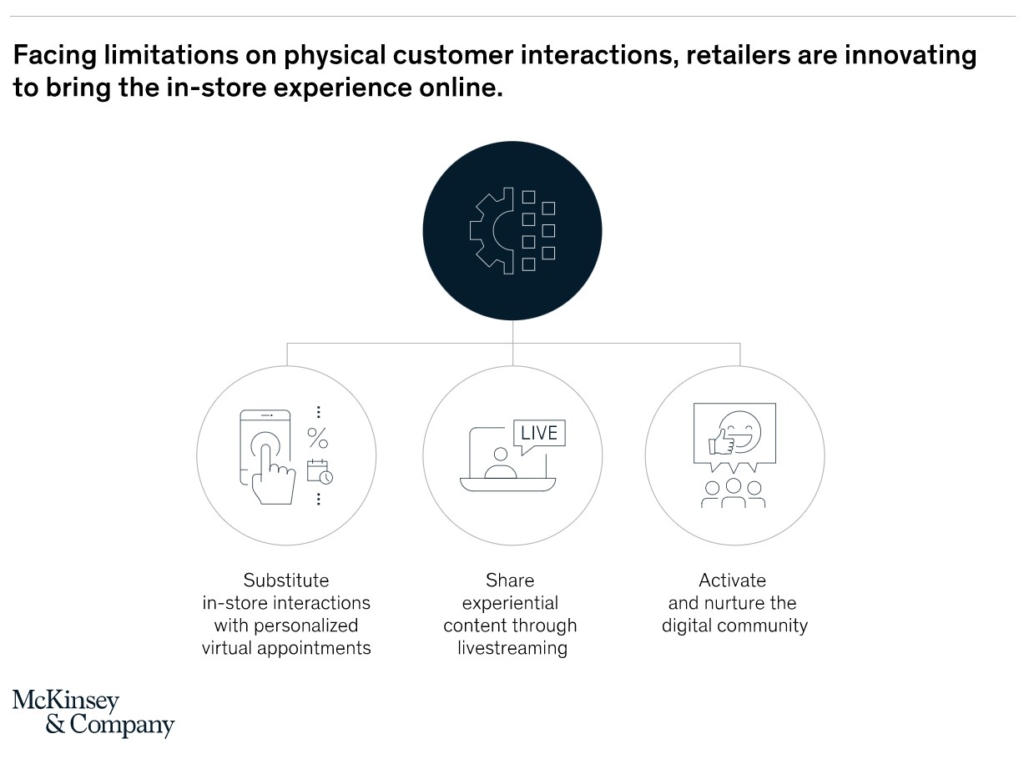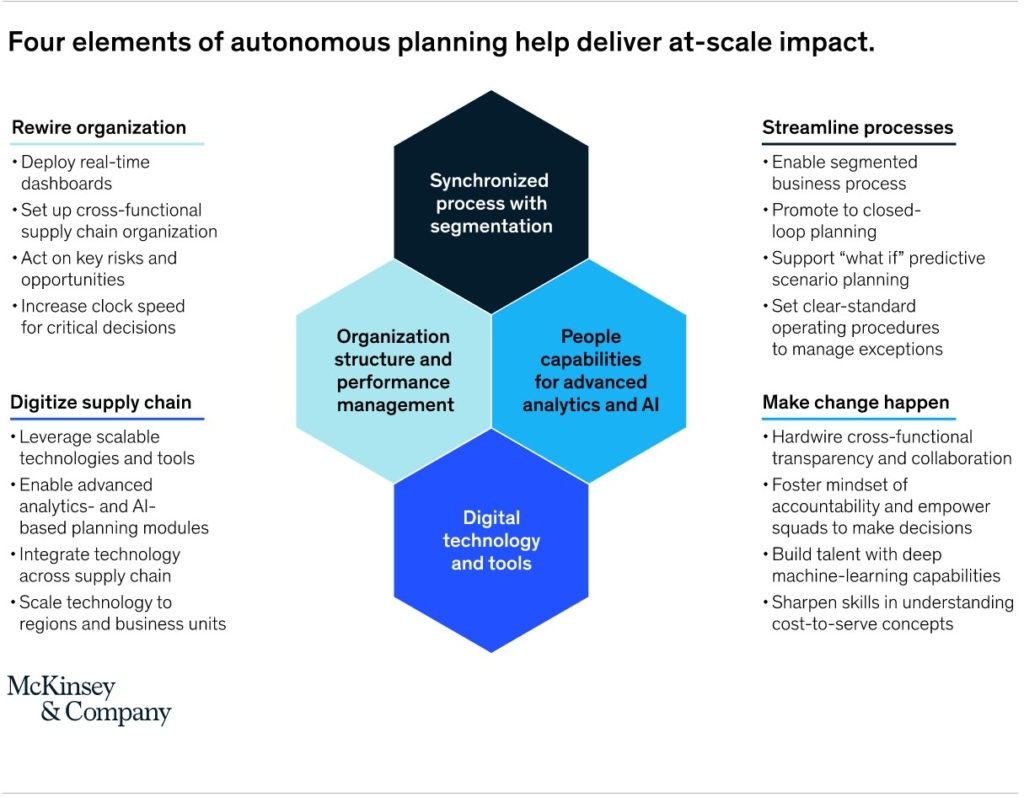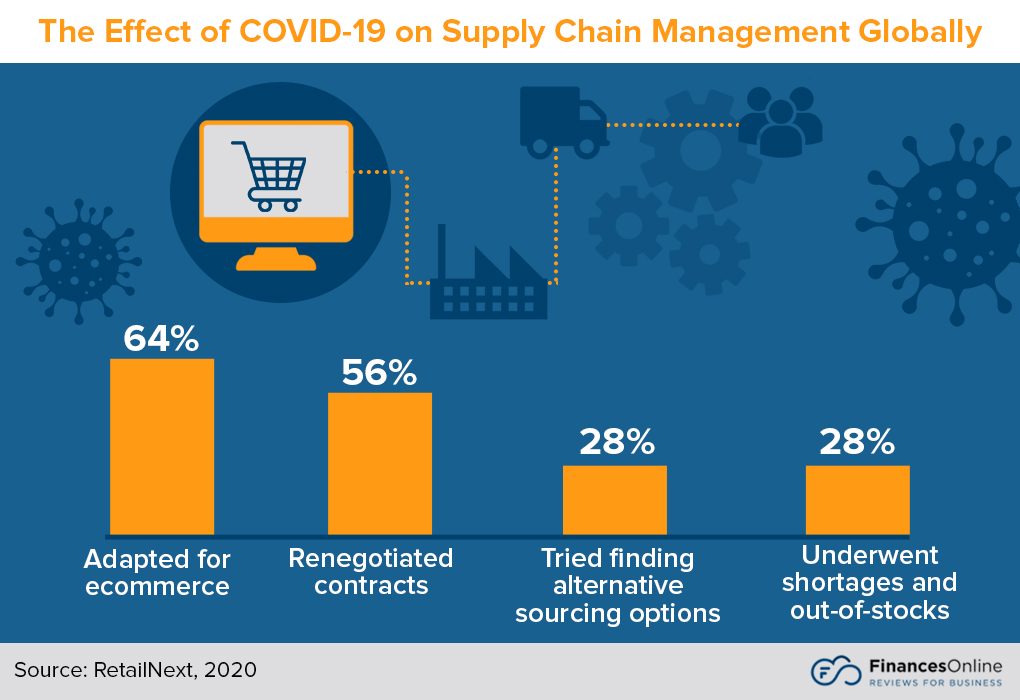While retail businesses have suffered immensely due to the pandemic, adapting is crucial to keep moving forward and maintain a positive ROI.
Overcoming Supply Chain issues: How to build your Post-Covid Strategy?

The size and complexity of global supply chains, with their significant resources and risk-mitigation strategies among multiple partners, were previously thought to create significant security. The ongoing COVID-19 pandemic continues to show how wrong that assumption was. Global supply chains are vulnerable and will remain that way without significant planning. Retailers are still vulnerable to large-scale threats as well as regional issues like labour shortages and lockdowns.
For retailers looking to plan and protect their supply chains, it’s time to prioritize risk mitigation and thorough reviews. This article will look at five areas where planning and understanding must be improved for them to adapt to the realization that significant risk is lurking in its supply chain.
Enhance workforce planning
Supply chains are heavily dominated by human labor. People are present at multiple points for every single supply chain action. What COVID should remind supply chains is that every worker needs protection and training. But labor also involves many potential risks. You’ll need to work to keep people safe and understand and plan for times when people are out sick, whether individually or as a group.
Companies should have a plan for increased absenteeism and labor shortages. The post-COVID supply chain will still deal with COVID, the flu, and other seasonal health threats. No one is quite sure what that’ll look like, but experts across a wide range of industries say we should continue to expect increased health screenings and safety protocols.
This means you’re at greater risk of being impacted by regional outbreaks or clusters of illness. Look for robust tools that can help you tackle these concerns on multiple levels. RFID, for example, has applications that can improve your inventory accuracy and on-floor availability while reducing touchpoints and allowing staff and customers maintain proper distancing. Reducing manual tasks, such as inventory cycle counts, also helps protect you against risks related to labor shortages. RFID can even create upsell opportunities as it reinforces health best practices.
Build a plan to address productivity and support losses related to illness-absenteeism. At the same time, continually train teams on safety and health protocols, enhance your cleaning regimens, and turn COVID spacing requirements (and others relevant to your facilities) into more permanent policies.
Start with alternatives at the last mile
One of the biggest pushes companies see in this shifting landscape is the desire to diversify their supply chain. That’s simple to say, but one of the most complex undertakings you can do during a time of uncertainty. Sourcing new manufacturers and establishing relationships in other countries for changing ocean lines or shipping routes are complex. The existing backlog means any shift will take time to test, verify, and approve.
Companies can make a more immediate shift in their last-mile delivery, the final leg of a shipment from your warehouse or facility to the customer’s door. Increasing carrier access by moving to larger facilities and establishing relationships with regional carriers alongside national partners can help any brand build up resilience.
In many cases, this need is a strong enough reason to look at outsourcing fulfillment at any stage in a business’s development. Third-party logistics providers (3PLs) have many of these relationships already. Their higher volume also enables the 3PL to negotiate strong rates and deeper discounts, which they should pass onto customers. 3PLs like Red Stag Fulfillment, which specializes in specific product categories or attributes, can help niche and dedicated businesses make the most gains by pursuing the most relevant carrier discounts or those targeting product types.

Trace from end to end
The COVID-era supply chain struggled, often because of shifting supply and production capabilities, while demand largely grew. Manufacturing shutdowns, port delays, and other breaks in the chain had compounding effects. It was hard to understand how to adapt to any single element, let alone these larger issues.
Subsequent reviews of supply chains and risk mitigation studies have shown that, while many companies have expressed interest in chain visibility, most struggle to implement this. That cannot be the case for a viable post-COVID supply chain. It’s time for eCommerce sellers, manufacturers, wholesalers, carriers, and intermediaries to share data proactively. You can start this conversation by reaching out to learn what technologies your partners use and find areas of common ground or shareable data and file types. Tackle it from multiple perspectives including your customers, 80% of whom want to know real-time availability.
Thanks to current digital technology, end-to-end visibility is achievable, and we now clearly see its value. Align your investments toward information gathering and sharing to optimize other capital expenditures. Pursuing AI and analytics, 3D printing or additive manufacturing, improved conveyors, and other infrastructure technology first could create budget gaps that prevent the adoption of systems and communication strategies where you learn what’s happening at the manufacturing level and can understand its impact through the last mile.
Create an information-sharing plan if you want to be a preferred partner. Start the process by automating the delivery and sharing forecasts. When you detect a change or trend, share this up the chain to help partners better predict demand and strain, enabling them to allocate appropriate space when available.
Review inventory and available space
Supply chains are moving away from just-in-time inventory practices but there are struggles with what comes next. Instead of trying to define a completely new approach, look for adjustments you can make to take realistic steps for safety. For an inventory, that means balancing what you have in stock and preventing stockouts while not hoarding in a way that harms profitability or tying up too much capital. This requires you to get demand forecasts right.
Protect yourself by looking for periods of stockouts and pulling them from your demand forecasts. Run your analytics to plan based on demand when you were able to complete orders so that you’re not using low numbers. You might be able to double-check this work by looking at site traffic to sales pages — if it stayed consistent even when items were on backorder, then potential demand was steady.
After you’ve got forecasts that are correct for stockouts, look at the physical space you have available. How much can you fill? If you order more inventory than normal, do you have room for it? Balance that by determining how many additional costs you’ll incur for this holding. Higher inventory levels have higher labour costs, heating or cooling your facilities can change, you might use more equipment, and so on.
If you’re working with a 3PL, discuss their ability to scale and hold inventory. You want to be a reliable partner that they keep on. That requires you to strike a balance in terms of inventory, ensuring you can meet orders but understanding that long-term storage is causing issues for 3PLs and warehouse companies right now.

Create time to address systemic issues
Evidently, retailers are having difficulty attracting the best talent to retail positions. So, what can they do about this? In an article last year, we explored how technology can help improve the employee experience and thus retain employees. Employee experience technology can accomplish three major goals in retail talent management: increase productivity and goal accomplishment, improve employee agency at work, and help employees be more creative at work.
Perhaps the biggest supply chain takeaway from the COVID-19 pandemic is that many were built to withstand risks and threats in specific areas. When issues pushed beyond small-scale mitigation, supply chains started to buckle. Some faltered when overwhelmed across the entire chain while others had unrealized points of failure that only took light pressure to break.
Supply chain professionals and retailers need to start reviewing their operations systematically. Verify strength in each part and think about how that imparts reliability to the whole. Or see if areas with limited options are generating more significant risk. What many professionals once assumed were geographically limited threats have turned into global concerns.
Pandemic risks highlight systemic issues. Take the time to review what you’ve faced and where you’ve failed. Celebrate the parts of your supply chain that worked. Use those as guidelines for reviewing and improving gaps and potential. No one knows what the next black swan event will be, but we all now know that it has a chance to impact every aspect of our businesses and supply chains.

This guest article was written by Jake Rheud. He is the Vice President of Marketing for Red Stag Fulfillment, an eCommerce fulfilment warehouse that was born out of eCommerce. He has years of experience in eCommerce and business development.
Would you like to feature in our Retail insights section? Contact us today



